INSTITUT SUPERIEUR D'ANTHROPOLOGIE
INSTITUTE OF ANTHROPOLOGY
ONLINE COURSES / COURS A DISTANCE
WINTER TERM : JANUARY 2016
REGISTER NOW
INDE – 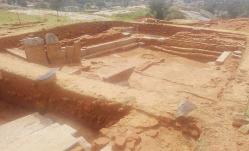
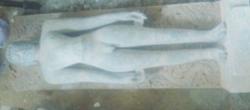 Arthipura - Another Jain centre is being excavated at Arthipura village in Mandya by archaeologists of Archaeological Survey of India (ASI) who believe that the site under excavation could be older than Shravanabelagola in Hassan. Archaeologists have established that there are similarities between the relics found at Arthipura and Shravan abelagola as far as location is concerned. Assistant Archaeologist Aravazhai who is supervising excavation works at the site, told Deccan Chronicle on Thursday that basadis are located on a hillock while a statue of Bahubali about 13-foot is located on another hillock opposite the basadis in Arthipura. Similarly basadis and a gigantic statue of Bahubali have also been found in two hillocks facing each other. “These basadis might belong to the early Ganga period rulers who ruled the region from the 3rd century to 9th century. Later on, Hoysala kings might have developed these basadis,” observed Mr Aravazhai adding that kings of Ganga dynasty might have used the same concept of Arthipura at Shravanabelagola. Since the excavations resumed about one-and-half month ago at the site, ASI has exposed five basadis and a platform at Arthipura which are built using bricks and stones. Besides, sculptures of Bahubali among others have been exhumed from the site.
Arthipura - Another Jain centre is being excavated at Arthipura village in Mandya by archaeologists of Archaeological Survey of India (ASI) who believe that the site under excavation could be older than Shravanabelagola in Hassan. Archaeologists have established that there are similarities between the relics found at Arthipura and Shravan abelagola as far as location is concerned. Assistant Archaeologist Aravazhai who is supervising excavation works at the site, told Deccan Chronicle on Thursday that basadis are located on a hillock while a statue of Bahubali about 13-foot is located on another hillock opposite the basadis in Arthipura. Similarly basadis and a gigantic statue of Bahubali have also been found in two hillocks facing each other. “These basadis might belong to the early Ganga period rulers who ruled the region from the 3rd century to 9th century. Later on, Hoysala kings might have developed these basadis,” observed Mr Aravazhai adding that kings of Ganga dynasty might have used the same concept of Arthipura at Shravanabelagola. Since the excavations resumed about one-and-half month ago at the site, ASI has exposed five basadis and a platform at Arthipura which are built using bricks and stones. Besides, sculptures of Bahubali among others have been exhumed from the site.
http://www.deccanchronicle.com/151204/nation-current-affairs/article/another-jain-centre-under-excavation-mandya-district?
INDE – 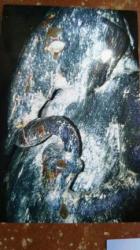 Gokarna - Authorities of the iconic Mahabaleshwar Temple in the coastal temple town of Gokarna in northern Karnataka have approached officials of the Mahalaxmi Temple in Maharashtra’s Kolhapur district seeking assistance in the restoration of a Ganesha idol. The Mahabaleshwar Temple, suffused with India’s ancient heritage and religiosity, was built during the reign of the Kadamba dynasty that held sway over the State during the 4th-6th centuries CE. Historians say the Ganesha idol is one of the oldest worshipped images of Lord Vinayaka. “The idol bears ancient ethnographic features that date from the 4th century that make it unique,” said Shrinivas Padigar, professor and chairman of ancient Indian History and Epigraphy, Karnataka University, Dharwad. According to mythology, the temple, located on the Karwar coast, was established after Ravana, an ardent worshipper of Lord Shiva, was on his way to Sri Lanka from the latter’s abode in Kailash when he stopped by at the spot for evening prayers. It is said that there he encountered Ganesha disguised as a Brahmin boy. The idol, contrary to the mythos about evolution of the four-handed Ganesha, depicts a two-handed Ganapati seen standing and clutching a radish (in lieu of lotus) and a goblet-shaped ‘modak patra’ (vessel).
Gokarna - Authorities of the iconic Mahabaleshwar Temple in the coastal temple town of Gokarna in northern Karnataka have approached officials of the Mahalaxmi Temple in Maharashtra’s Kolhapur district seeking assistance in the restoration of a Ganesha idol. The Mahabaleshwar Temple, suffused with India’s ancient heritage and religiosity, was built during the reign of the Kadamba dynasty that held sway over the State during the 4th-6th centuries CE. Historians say the Ganesha idol is one of the oldest worshipped images of Lord Vinayaka. “The idol bears ancient ethnographic features that date from the 4th century that make it unique,” said Shrinivas Padigar, professor and chairman of ancient Indian History and Epigraphy, Karnataka University, Dharwad. According to mythology, the temple, located on the Karwar coast, was established after Ravana, an ardent worshipper of Lord Shiva, was on his way to Sri Lanka from the latter’s abode in Kailash when he stopped by at the spot for evening prayers. It is said that there he encountered Ganesha disguised as a Brahmin boy. The idol, contrary to the mythos about evolution of the four-handed Ganesha, depicts a two-handed Ganapati seen standing and clutching a radish (in lieu of lotus) and a goblet-shaped ‘modak patra’ (vessel).
http://www.thehindu.com/news/national/ancient-idol-to-be-restored/article7946526.ece?
EAST TIMOR – 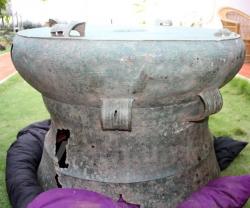 Baucau - The drum, 1.03 metres in diameter, 78 cm in height, and 80kg in weight, was found accidentally at a construction site in Baucau, the second largest city in Timor Leste, in late 2014. However, official information was just released in late November this year after researchers had conducted preliminary assessment. Archaeologist Nuno Vasco Oliveira from the Timor Lester Government’s General Directorate of Art and Culture said he is certain that the item is a Dong Son bronze drum – an icon of the Dong Son culture (700 B.C. – 100 AD) of the ancient Vietnamese people. This is not the first time a Dong Son drum has been found in Timor Leste. The ones previously unearthed were badly damaged while the newly found item is in a relatively good condition. Samples of the drum will also be sent to France for in-depth analysis of its material and age. Timor Leste experts believe that it dates back at least 2,000 years. A number of stone carvings similar to patterns on Dong Son drums had previously been dug up in the east of the Southeast Asian country and the discovery of Dong Son drums provides a strong evidence of the presence of the Dong Son culture in there millennia ago, he said, expressing his hopes for coordination with Vietnamese colleagues in studying that drum. Dong Son drums are iconic items of the ancient Vietnamese’s Dong Son culture, a Metal Age archaeological culture. They are usually big and have well-proportioned shapes, showing high production skills and aesthetics of the ancient people. The Dong Son culture got its name from Dong Son village on the bank of the Ma River in the central province of Thanh Hoa. A number of bronze drums were found by chance in 1924, marking the first evidence of the culture's existence.
Baucau - The drum, 1.03 metres in diameter, 78 cm in height, and 80kg in weight, was found accidentally at a construction site in Baucau, the second largest city in Timor Leste, in late 2014. However, official information was just released in late November this year after researchers had conducted preliminary assessment. Archaeologist Nuno Vasco Oliveira from the Timor Lester Government’s General Directorate of Art and Culture said he is certain that the item is a Dong Son bronze drum – an icon of the Dong Son culture (700 B.C. – 100 AD) of the ancient Vietnamese people. This is not the first time a Dong Son drum has been found in Timor Leste. The ones previously unearthed were badly damaged while the newly found item is in a relatively good condition. Samples of the drum will also be sent to France for in-depth analysis of its material and age. Timor Leste experts believe that it dates back at least 2,000 years. A number of stone carvings similar to patterns on Dong Son drums had previously been dug up in the east of the Southeast Asian country and the discovery of Dong Son drums provides a strong evidence of the presence of the Dong Son culture in there millennia ago, he said, expressing his hopes for coordination with Vietnamese colleagues in studying that drum. Dong Son drums are iconic items of the ancient Vietnamese’s Dong Son culture, a Metal Age archaeological culture. They are usually big and have well-proportioned shapes, showing high production skills and aesthetics of the ancient people. The Dong Son culture got its name from Dong Son village on the bank of the Ma River in the central province of Thanh Hoa. A number of bronze drums were found by chance in 1924, marking the first evidence of the culture's existence.
http://english.vietnamnet.vn/fms/art-entertainment/148256/vietnam-s-ancient-dong-son-drum-found-in-timor-leste.html
ROYAUME UNI – 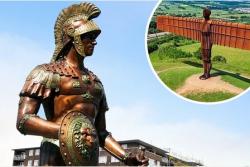 Douvres - Welcome to Dover, home to the White Cliffs, a historic castle – and 20 metre tall fibreglass Roman soldier, if top Kent architects have their way. Dubbed "The Colossus of Dover", this ambitious plan for a £2 million statue of a legionary is the brainchild of Dr Brian Philp and his team at Kent Archaeological Rescue Unit. Standing tall on Dover seafront, it would be the southern match to the 20 metre tall Angel of the North, England's biggest statue – the massive steel sculpture did wonders for its hometown, Gateshead.
Douvres - Welcome to Dover, home to the White Cliffs, a historic castle – and 20 metre tall fibreglass Roman soldier, if top Kent architects have their way. Dubbed "The Colossus of Dover", this ambitious plan for a £2 million statue of a legionary is the brainchild of Dr Brian Philp and his team at Kent Archaeological Rescue Unit. Standing tall on Dover seafront, it would be the southern match to the 20 metre tall Angel of the North, England's biggest statue – the massive steel sculpture did wonders for its hometown, Gateshead.
http://www.dover-express.co.uk/Angel-South-guard-shores/story-28283012-detail/story.html?
HAWAI – 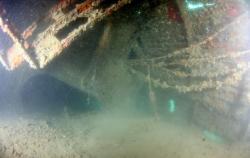 Pearl Harbor - Archaeologists from NOAA and the University of Hawaii have released incredible images of a U.S. Navy plane sunk during the opening minutes of the attack on Pearl Harbor on Dec. 7 1941. Just minutes before the attack on Pearl Harbor, aircraft from the Japanese Imperial Navy bombed the nearby U.S. Naval Air Station on the east coast of Oahu, NOAA explained in a press release. Some 27 Catalina PBY "flying boats" on the ground or moored on Kāne‛ohe Bay were destroyed in the attack.
Pearl Harbor - Archaeologists from NOAA and the University of Hawaii have released incredible images of a U.S. Navy plane sunk during the opening minutes of the attack on Pearl Harbor on Dec. 7 1941. Just minutes before the attack on Pearl Harbor, aircraft from the Japanese Imperial Navy bombed the nearby U.S. Naval Air Station on the east coast of Oahu, NOAA explained in a press release. Some 27 Catalina PBY "flying boats" on the ground or moored on Kāne‛ohe Bay were destroyed in the attack.
http://www.foxnews.com/science/2015/12/04/incredible-images-reveal-us-navy-seaplane-lost-in-pearl-harbor-attack.html
INDE – 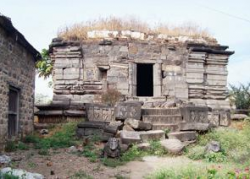 Mahuli - Mahuli, around 200 kms from Pune, has one such shrine with two sanctums. The Kadamba Devi Temple, believed to be from the late Shilahar period or the early Hemad-Panti (Yadav) period, is in a severe state of disrepair and has been taken up for restoration by the state archaeology department. The temple has typical features of the Shilahar style of architecture and is characterised by their typical carvings. The temple has one completed sanctum while the other is incomplete, which indicates work had been stopped for some reason. The sanctum has a Shivling as well as the idol of Kadamba Devi. The temple has two entrances, one facing the north and the other, south. The south-facing entrance has beautiful carvings
Mahuli - Mahuli, around 200 kms from Pune, has one such shrine with two sanctums. The Kadamba Devi Temple, believed to be from the late Shilahar period or the early Hemad-Panti (Yadav) period, is in a severe state of disrepair and has been taken up for restoration by the state archaeology department. The temple has typical features of the Shilahar style of architecture and is characterised by their typical carvings. The temple has one completed sanctum while the other is incomplete, which indicates work had been stopped for some reason. The sanctum has a Shivling as well as the idol of Kadamba Devi. The temple has two entrances, one facing the north and the other, south. The south-facing entrance has beautiful carvings
http://www.punemirror.in/pune/civic/Restoring-shrine-stone-by-stone/articleshow/50032658.cms
INDE – 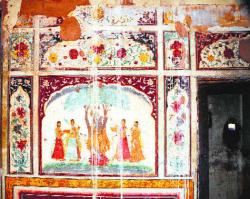 Ram Bagh - The beautiful fresco adorning the four walls of a room on the terrace of the Summer Palace of Maharaja Ranjit Singh in the historic Ram Bagh has been ruined. The rare fresco which depicts Lord Krishna during Raasleela has been damaged which has not only upset heritage lovers but also raised eyebrows about the seriousness of the government in preserving the invaluable heritage. The priceless frescoes are an invaluable part of Punjab’s heritage. The period of Maharaja Ranjit Singh was the Renaissance period in Punjab when art and architecture flourished under his patronage. A conservation expert involved in the work pointed out on condition of anonymity that the wall paintings should have been preserved on a priority basis. He said the damaged portion is not possible to be retrieved or replicated in the absence of any documentation.
Ram Bagh - The beautiful fresco adorning the four walls of a room on the terrace of the Summer Palace of Maharaja Ranjit Singh in the historic Ram Bagh has been ruined. The rare fresco which depicts Lord Krishna during Raasleela has been damaged which has not only upset heritage lovers but also raised eyebrows about the seriousness of the government in preserving the invaluable heritage. The priceless frescoes are an invaluable part of Punjab’s heritage. The period of Maharaja Ranjit Singh was the Renaissance period in Punjab when art and architecture flourished under his patronage. A conservation expert involved in the work pointed out on condition of anonymity that the wall paintings should have been preserved on a priority basis. He said the damaged portion is not possible to be retrieved or replicated in the absence of any documentation.
http://www.tribuneindia.com/news/cities/amritsar/rare-fresco-at-ranjit-singh-s-palace-in-ruins/166462.html